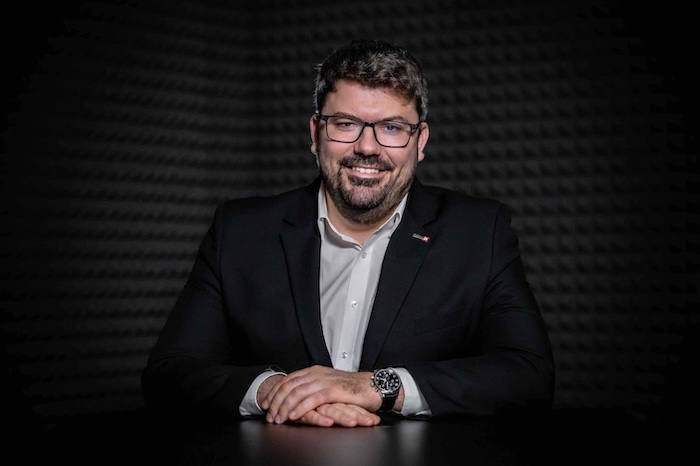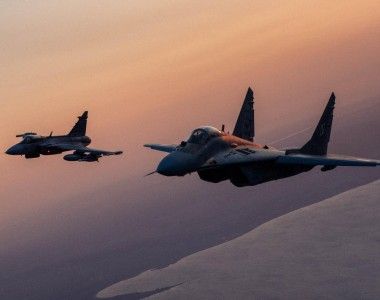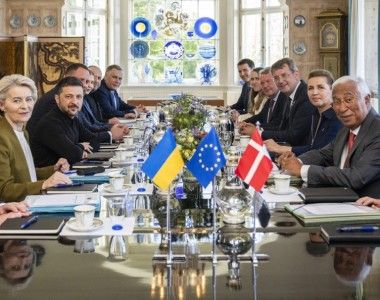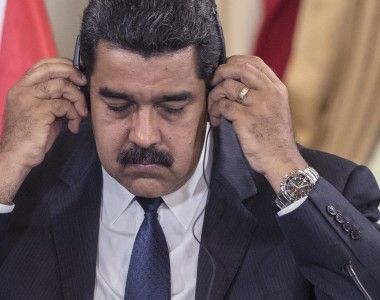Polish MoD: Ukraine Has Re-examined Military Dogmas. European Funds Can Mitigate Shortfalls [INTERVIEW]
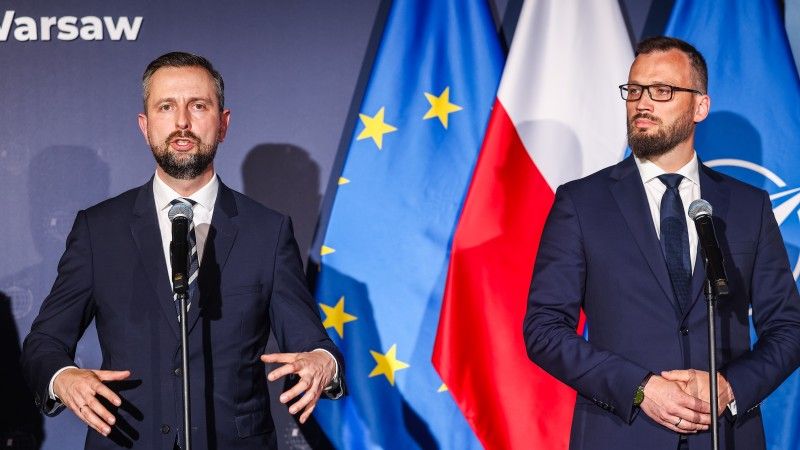
Photo. CEE Security Forum
“We will work to maintain the closest possible cooperation with the United States, but Poland’s defence-strengthening programme has never—and cannot—rest solely on that relationship. That is why we will consistently deepen ties with our partners and other NATO members, and equally resolutely advocate for those countries to increase their defence spending in support of our shared security.”, Władysław Kosiniak-Kamysz, Deputy PM, Head of the Polish Ministry of Defence, told us.
Minister, we’re speaking here at the Forum for Security of Central and Eastern Europe. A recent decision redirected funds from the National Recovery and Resilience Plan (KPO) toward defence purposes. Of the PLN 25 billion total, only PLN 4 billion goes to the arms industry; the rest is earmarked for dual-use infrastructure and civil defence. Isn’t that too little, given the state of our defence-industrial base?
That PLN 25 billion is an investment in security understood as an integrated system. The arms industry is one component, of course crucial from the Ministry of Defence’s perspective, but only one. The operational effectiveness of our Armed Forces depends heavily on their support infrastructure: not just training and maintenance, but physical infrastructure as well; so investments in dual-use infrastructure are vital. Moreover, by virtue of its dual nature, such infrastructure will serve us in peacetime as well. We aim to manage public funds rationally: it’s not hard to build infrastructure, but the real challenge is to operate it efficiently and maintain it over the long term—in peace, crises, or war.
Additional funding for civil defence ties into this: once our operational forces are engaged in conflict, their rear areas must be secure. We need to co-finance and rebuild civilian capabilities in this field—something that has been significantly neglected in recent years. Civil defence is not only about shelters, as much as they’re talked about; it’s also about public awareness, training, and readiness to act in emergencies. Naturally, that must be backed by appropriate equipment, which circles us back to infrastructure. PLN 25 billion is an investment from which every Pole will benefit. Coupled with the fact that in 2025 we allocated a record defence budget—over PLN 186 billion—it gives us a solid foundation for action, including cooperation with our domestic defence industry. The 50/50 rule for domestic and foreign procurement remains our priority.
Since we’re on European matters, how are preparations going to apply for funding under the EU’s SAFE programme? Applications can be made until 2030, which puts pressure both on preparing proposals and on deliveries. What amount can Poland expect, and what must we do to use it in time?
We expect Poland could secure around PLN 120–130 billion from SAFE. While 2030 might seem distant, we must do everything procedurally to be ready. We are fully aware of the current geopolitical situation and its volatility. What’s happening in Ukraine has led to a re-examination of military dogmas about modern battlefields, while exposing shortfalls—for example, in ammunition production. SAFE funds can help address these gaps.
What are the priorities for using SAFE funds? Which programmes stand the best chance of receiving European money?
What excites me most about the SAFE initiative is how swiftly and unanimously it was adopted by the European Union. It demonstrates our collective resolve to build common defence on the continent. Until now, the EU has never moved so rapidly—projects that normally take years were completed in just four months. Through SAFE, member states can access up to €150 billion in low-interest loans. The programme also relaxes rules on using national funds for security. We estimate Poland’s share at around PLN 120–130 billion—massive sums that will bolster our military and defence industry. We must expand production capacity, place concrete orders for military equipment, and develop new technologies. It’s worth noting we secured a favourable balance among producer nations: up to 35% of loans can be contracted for purchases from „third countries,” like the U.S. and South Korea, with whom we already have advanced cooperation agreements.
Read more
Do you see opportunities under SAFE not only for Poland but also for other countries? Which products expected under the programme have export potential?
Generally, SAFE is a win-win—for both the states and their industries. Its flexibility allows for varied procurement arrangements, whether involving one, two, or multiple countries. Poland plans to secure as much as possible for our factories and armed forces. Prospects look optimistic. These billions of zlotys could fund production of systems like the Baobab mine-laying system, Piorun air-defence missile launchers, Krab self-propelled howitzers, or Borsuk infantry fighting vehicles. Our export products are valued by Polish troops and allied forces alike—and that’s precisely what we should highlight and leverage under this programme.
We see a rapidly evolving battlespace: Ukraine’s drone strike on Russian bombers, Israel’s inventive counter-strikes, Russia’s constant capability build-up in its war against Ukraine. What do you consider the top priorities for modernising our Armed Forces?
Priorities in such a broad field are numerous—it’s a multi-layered, interconnected system. We will certainly continue the transformation and modernisation of our army. To the more than 100 current equipment contracts—including critically important platforms like the new Borsuk infantry fighting vehicle and Apache helicopters—we will soon add major agreements for, among others, submarines under the „Orka” programme. We are rolling out cutting-edge projects in the Polish military: our Unmanned Systems Inspectorate and the Centre for Artificial Intelligence Implementation are already operational. We’re building space-domain capabilities, acquiring MikroGlob and MikroSAR systems. We’re also focusing on personnel, not just hardware.
That’s why we’re implementing the „Szpej” project to overhaul soldiers« individual equipment. We want the Polish Army to grow even larger: we’re already around 209,000 soldiers, and recruitment quotas for this year remain open, counted in thousands of new troops. In NATO, only the U.S. and Turkey exceed us in troop numbers. We must also remember the government and MOD’s major „Eastern Shield” programme — a generational project to secure Poland’s borders, worth roughly PLN 10 billion. All these directions and projects are possible thanks to a significant—but well-justified—financial effort by the Polish state. In 2025 we planned a record defence budget at about 4.7% of GDP—around 60% more than in 2023, and over 2.5 times more than in 2022. It is an investment in Polish security.
The international situation is evolving dynamically and could pose challenges for Poland. What might be the consequences of an Israeli strike on Iran, and how should we act to minimise any negative effects for Poland and the region?
Conflict in the Middle East, like the war in Ukraine, teach us priceless lessons. We see the critical roles of air defence, drones, and electronic warfare, which confirm the wisdom of our modernisation programmes. Certainly, a risk is a potential migration wave—Sweden has already mentioned that—and another is how the conflict there will impact oil prices and thus the world’s major economies. We should also remember this is not the first such conflict in that region; the question on many capitals« minds, not only in Europe, is how far it will escalate.
The NATO summit in The Hague is coming up soon. What will Poland and the regional countries be demanding? There’s talk of a possible reduction in U.S. troop presence—will Poland be affected?
Let me stress: there are no concrete plans to withdraw troops from Europe, let alone from Poland. About 10,000 U.S. soldiers remain stationed here. The mere risk of withdrawal, in my view, has been an argument compelling European states to increase defence spending. As budgetary trends across Europe and the EU’s growing focus on defence show, it was an effective argument. I understand America’s pivot to the Indo-Pacific, but a large-scale troop reduction in Europe would signal alliance incoherence. Americans have been stationed on the Old Continent since the 1940s. In security policy, international reputation is paramount—especially when authoritarian leaders in Russia, China, or Iran look for any sign of weakness.
What will Poland and its neighbours propose at the NATO summit in The Hague?
At The Hague, we will press for what Poland has long advocated: a substantial increase in allied defence spending. It should take the form of an investment plan covering not only weapons procurement, but also industry and societal resilience. Poland will strive to make this programme a firm commitment, not just a general promise. We will also push to keep real Alliance support for Ukraine. In the event of further Russian escalation and its re-arming, the key question for NATO security is to prevent a Russian military victory. Russia is a threat now, in its war against Ukraine, and in the future; we want allies to acknowledge that fact—from its aggressive policies over nearly two decades, from the attack on Georgia to today’s below-war-threshold actions such as sabotage, GPS jamming, and espionage. Poland cares about alliance cohesion, including transatlantic ties. The weaker those ties, the more all NATO members« security suffers. It is in the entire Alliance’s interest that we act together and share common views on contemporary threats.
Read more
We recently learned that the U.S. administration plans to limit FMF financing for future export contracts. How might that affect Poland’s upcoming orders from the US?
Two points are important: first, the U.S. 2026 budget is still under debate and needs Congressional approval. Second, even if the current proposal passes, about USD 200 million in assistance remains available. Separately, there is about USD 2 billion in loans and guarantees not tied to specific countries. I’m convinced that some of those funds could go to Poland, given our location, commitment to building our Armed Forces, and strong U.S. relations. Nevertheless, we must be realists: President Trump has made cutting spending a priority, and he’s also focused on competition with China in the Indo-Pacific and on the Middle East. We will work to maintain the closest cooperation possible with the U.S., but Poland’s defence-strengthening programme has never—and cannot—rest solely on that relationship. That is why we will consistently deepen ties with our partners and other NATO members, and equally resolutely advocate for them to increase defence spending for our shared security—a commitment we have more than fulfilled ourselves.
Finally, I’d like to ask about the „Eastern Shield” project, which by definition is international and regional. Is there a chance for joint procurement of equipment: drones, counter-drone systems; under this programme?
The „Eastern Shield” appears in the newly released „White Paper on the Future of European Defence” as a noteworthy, community-wide initiative. That shows the EU regards it as a collective endeavour. Negotiations are ongoing to allocate European funds for the programme. Of course, it is also a national priority with its own budgetary backing—it’s not dependent on external money; it’s already under way.
Thank you for this conversation.
